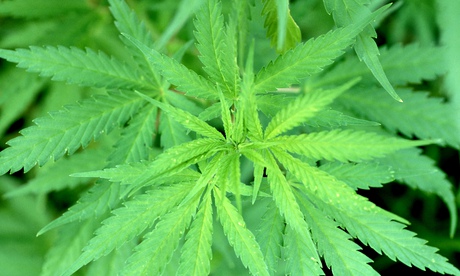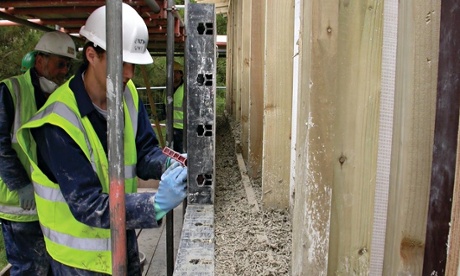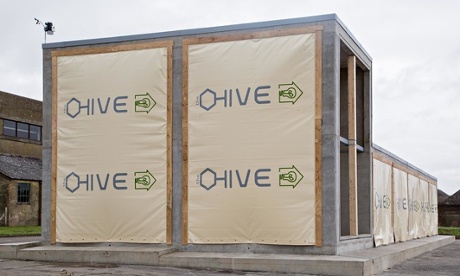By Alysa Landry
Source:
indiancountrytodaymedianetwork.com
 Tracy Johnson consoles his mother in 1957 when the New York Power Authority
seized Tuscarora land.
Tracy Johnson consoles his mother in 1957 when the New York Power Authority
seized Tuscarora land.
Four times a day, Crandy Johnson prays in his Native Tuscarora language and uses a homemade tincture made from traditional herbs.
Crandy, 72, and his brother Tracy, 74, are second-generation metal-workers who spent their working years as “steelwalkers,” perched atop skyscrapers, bridges and other structures from New York to Alaska during the construction boom after World War II. During an interview in Tracy’s home on the Tuscarora reservation in northwestern New York, the brothers talked fondly of their career.
“We did everything,” Tracy said. “We were on top of buildings and pipelines and people would look at us like we were crazy. It was scary but exhilarating.”
Now Crandy, who receives chemotherapy treatments for cancer, is facing a different fear. Since time immemorial, the Tuscarora grew hemp and used the plant for all aspects of life, he said. Hemp was used for rope, clothing and shelter. It also has hundreds of medicinal purposes.
Yet if Crandy grows or uses hemp—or any other form of cannabis, including the marijuana he claims would save his life—he could face local, state or federal criminal charges. And the danger is very real: the Johnson brothers have been raided six times by local law enforcement officers or the federal Drug Enforcement Administration.
“We have been arrested six times,” Crandy said. “We could face 30 years in prison for a sacred herb that was given to us for a reason, to heal us and give us clothing.”
Crandy Johnson and his brother Tracy. (HighTimes.com)
Traditional Use
Laws criminalizing the use of hemp go contrary to traditional teachings, Crandy said. Although botanists and historians quarrel over whether cannabis was native to America, the Tuscaroras’ creation story tells of the origin of the seed.
The creator placed the Tuscarora on the land and gave them divine instructions to take care of the land. Meanwhile, a tree grew in the Sky World. Beneath the tree was a great hole, through which a pregnant woman fell. As she fell, she grasped at the tree and brought with her some of the seeds, along with instructions for how to use it.
“As Tuscarora, we were deemed protectors of the seed,” Crandy said. “We have an inherent right to own it and use it.”
The Tuscarora, whose name means “hemp-gatherers” or “shirt-wearers”—references to the rich traditions involving hemp—was the final tribe to join the Iroquois Confederacy. The tribes comprising the confederacy, also called Six Nations or Haudenosaunee, are native to New York and were instrumental in fighting the Revolutionary War—on both sides of the conflict.
The Iroquois Confederacy also contributed to early American government. The U.S. Constitution borrowed liberally from the Confederacy’s Great Law of Peace.
Eleven years after the Revolutionary War ended, George Washington signed the Canandaigua Treaty of 1794, which guaranteed the Six Nations rights to their land and a life “free and undisturbed.” The treaty also forged a “permanent friendship” with the tribes.
Crandy points to this treaty as evidence that the Tuscarora should be allowed to grow and use cannabis.
“We have a treaty signed by George Washington giving us this right,” he said. “Washington called the Tuscarora and the Oneida for help, and we had an obligation to answer. Then he had an obligation to protect our way of life.”
Despite legal threats against him, Crandy argues that his medical condition, tradition and a historic treaty all guarantee him the right to all forms of cannabis.
“God created us to be self-healers, and that’s why he created all these herbs,” he said. “That’s why our hemp is so sacred to us.”
Traditional Use Disputed
However, not all Tuscarora agree that the modern-day uses of cannabis are based in tradition. Hemp, which comes from the cannabis plant, was used for rope, clothing and shelter. Its cousin, marijuana, comes from the same plant but is bred specifically for its flowers and leaves, which are used for recreational and medicinal purposes.
According to Rick Hill, who is Tuscarora and has studied the tribe’s origins as coordinator of the Indigenous Knowledge Center at Six Nations Polytechnic, in Ontario, Canada, says there is no evidence that Tuscarora ever smoked marijuana.
“Modern-day marijuana did not exist back then,” he said. “There’s no record in oral or written histories of hemp being smoked by any of the Six Nations. There were different kinds of native hemp plants, and the one our ancestors used did not have the hallucinogenic qualities.”
The hemp seed delivered from the Sky World produced fibers used to make yarn or string, Hill said. It was used to weave all kinds of things.
“When you look back in history, hemp was used as caulk between the boards in ships,” he said. “It was a rope-making material, and when the Tuscarora were in North Carolina, they wove long shirts with a very loose weave. They were called the people of the long shirts because those shirts were very distinctive. They were not called hemp people because they were smoking it.”
Hemp can be used to make rope, like this. (Wikipedia)
Differing interpretations aside, the conflict is not unique to the Tuscarora, or to American Indians who historically have been categorized as smoking “peace pipes” and using other plants like peyote for spiritual purposes. The legalization of marijuana—still defined by the White House as an illicit drug—is the topic of national debates, with scientists, doctors, politicians and even Hollywood celebrities weighing in.
Yet for Tracy and Crandy Johnson, who both have grown and used marijuana for medical or ceremonial purposes, a denial of that right is akin to the loss of Native land.
“At one point all this was solid hemp,” Tracy said, gesturing with his arms to encompass the original Iroquois land. “In my life, I have watched a form of life die. I have watched it die.”


















